Balloon vine
Balloon vine (Cardiospermum grandiflorum) is a scrambling, perennial, woody vine native to South America, which was originally introduced to Australia as an ornamental. Since its introduction, balloon vine has become a significant environmental weed in threatened rainforest habitats along the eastern coast of Australia. Its ability to climb and form dense mats over forest canopies, excluding light from the understorey canopy and smothering native plants enables it to change the ecosystem, creating opportunity for colonisation of the forest floor by other invasive species.
This sub-project focused on the rust fungus Puccinia arechavaletae, which attacks leaves, stems and fruits of balloon vine. The rust fungus originates from South America and was found to only infect plants in the Cardiospermum genus during host-specificity testing performed in quarantine in South Africa and New Zealand. It was released in the Cook Islands in December 2017, where there are no other Cardiospermum species, and it has already been observed to cause significant damage on balloon vine.
As part of this sub-project, additional host-specificity testing with this fungus was conducted on a total of 17 non-target species relevant to the Australian context. Of these Cardiospermum halicacabum var. halicacabum, Serjania exarata, Allophylus cobbe and Dodonaea viscosa developed disease symptoms. These results were discussed with other biocontrol researchers and it was concluded that it would be highly unlikely to obtain permission to introduce this rust fungus in Australia, should an application to release be submitted to the authorities. A decision was made to discontinue further testing with this candidate biocontrol agent.
Unfortunately, there are no other easily accessible candidate biocontrol agents to consider for balloon vine. A seed feeder from South America has been released in South Africa, but it would be logistically extremely difficult to undertake the necessary testing on Australian native plants to determine if it would be safe for introduction to Australia.
Gavin Hunter of CSIRO was the leader of this sub-project.
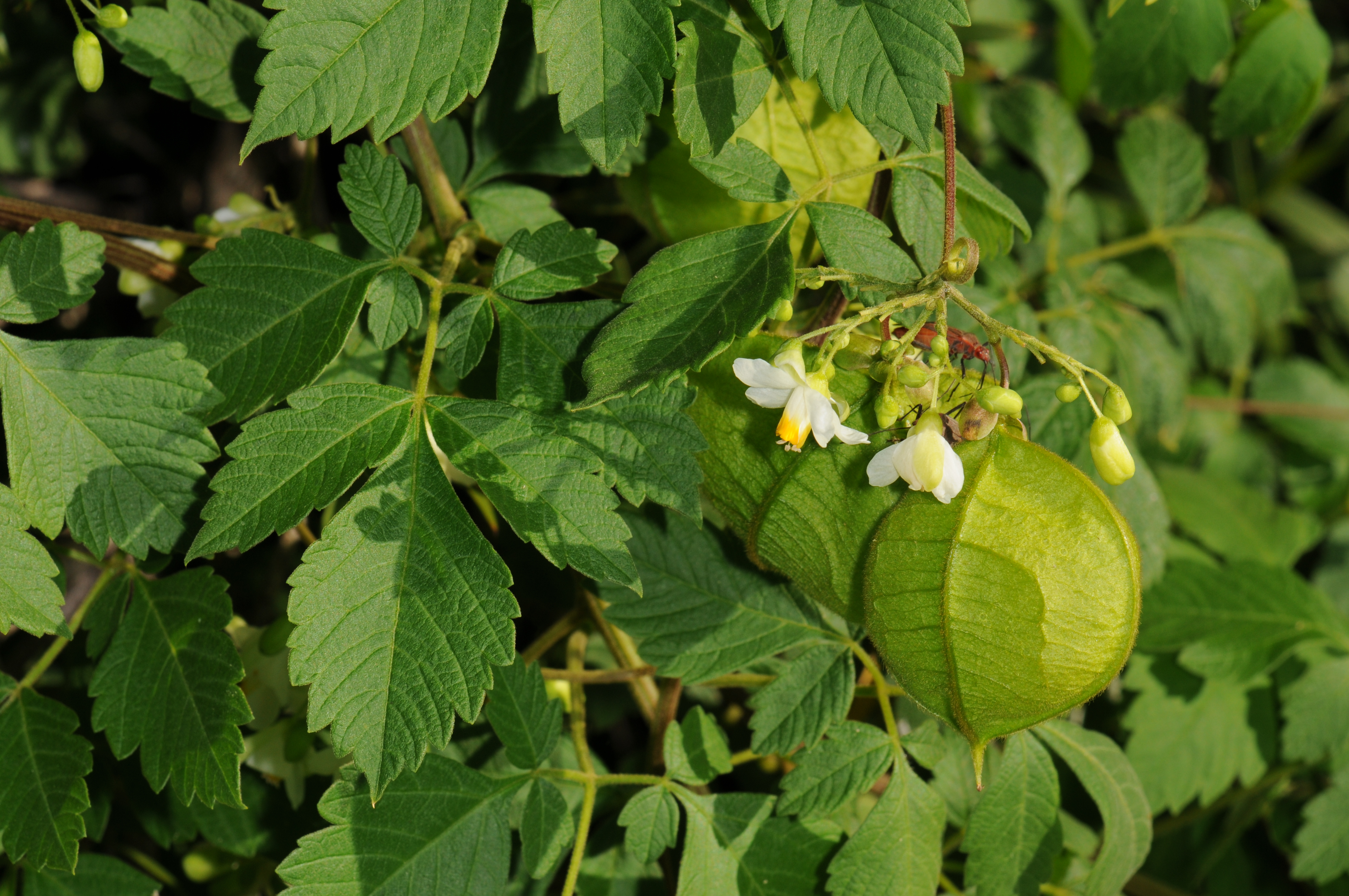
Foliage, flowers and fruits of balloon vine (Photo: John Hosking).
Background
What is the weed problem?
Since its introduction as an ornamental plant, balloon vine has naturalised and become a significant environmental weed in the critically endangered littoral rainforest and coastal vine thickets of southern south-east Queensland and the north coast of New South Wales. Balloon vine invades forest margins, watercourses and disturbed open areas. It is considered a ‘transformer’ species within the habitat it colonizes due to its ability to alter ecosystem properties. The nature of being a vine enables balloon vine to grow rapidly into the canopy forming thick mats of stems that cover tree canopies, thus excluding light from understory plants. These dense infestations can smother native plants.
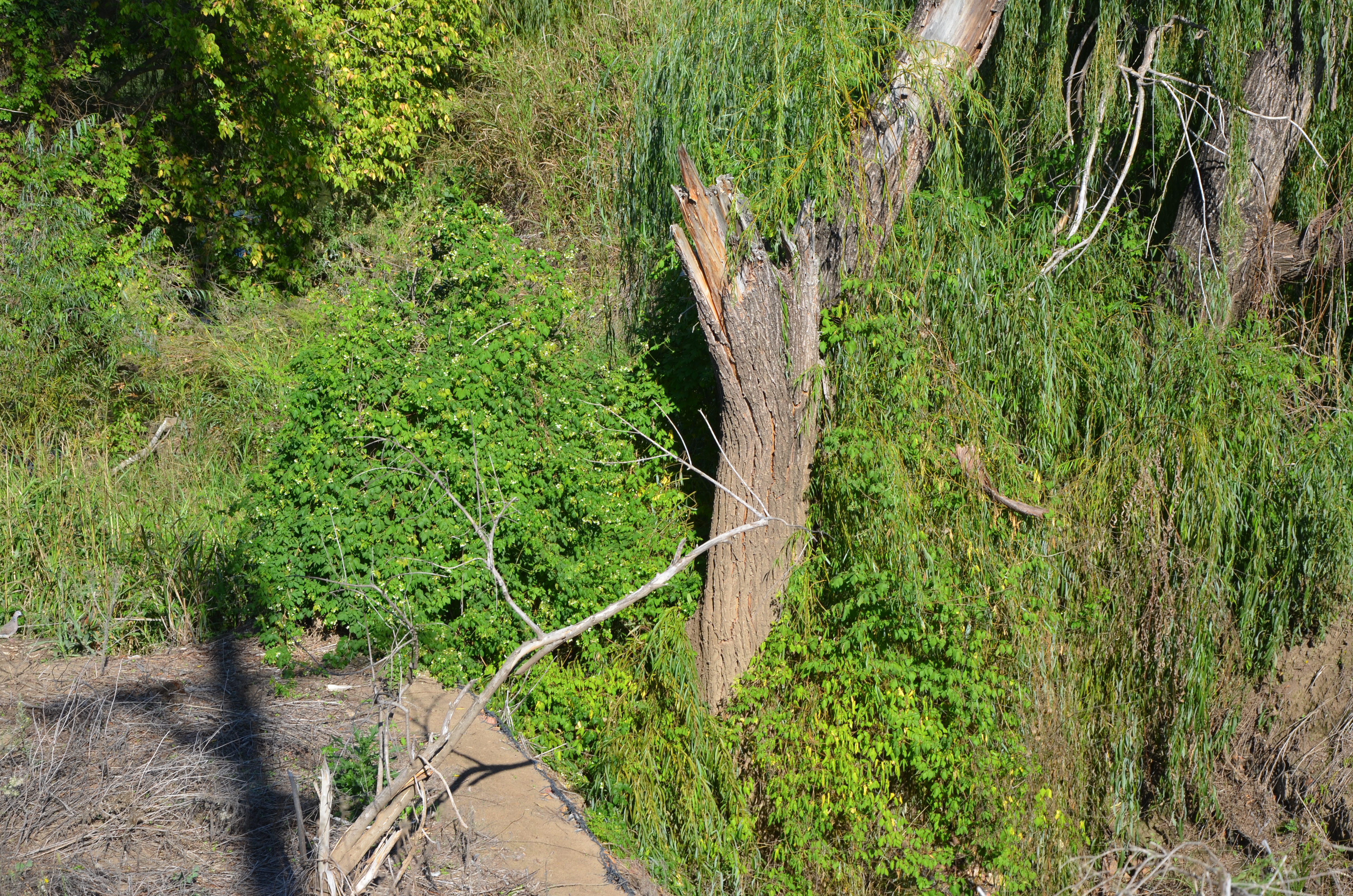
Infestation of balloon vine alongside the Peel River, Tamworth, New South Wales (Photo: John Hosking).
How is the weed currently managed?
Manual control is recommended for small infestations of balloon vine and involves pulling out plants with roots or cutting them at the base and removing roots in order to prevent re-sprouting. Stems of large plants can be cut at ground level and herbicide applied to the cut surface, while infestations with many vines can be cut at waist height to kill the top growth, which eventually falls from the canopy. Balloon vine produces a large seed bank that quickly germinates once infestations are cleared and therefore monitoring of cleared sites and follow-up control treatments may be necessary.
Herbicides may be used as stump or foliar sprays to manage balloon vine. There are no specific registered herbicides for balloon vine in Australia, however, New South Wales and Queensland do hold permits through the NSW Office of the Environment and Heritage and the Queensland Department of Agriculture and Fisheries, respectively that allow public use of specific herbicides for its management.
What can biocontrol offer to the weed’s management?
Options to effectively and sustainably control balloon vine are limited. Herbicides have the potential to enter waterways or affect non-target native vegetation during applications on balloon vine, while manual control of large infestations is considered labour intensive and thus expensive and unsustainable. Biological control is an attractive option to complement existing control methods because it is self-sustaining and does not cause non-target effects. A successful biocontrol program for balloon vine would lead to a major reduction in plant growth and vigour, which in turns would considerably reduce fruit/seed production and thus curtail spread.
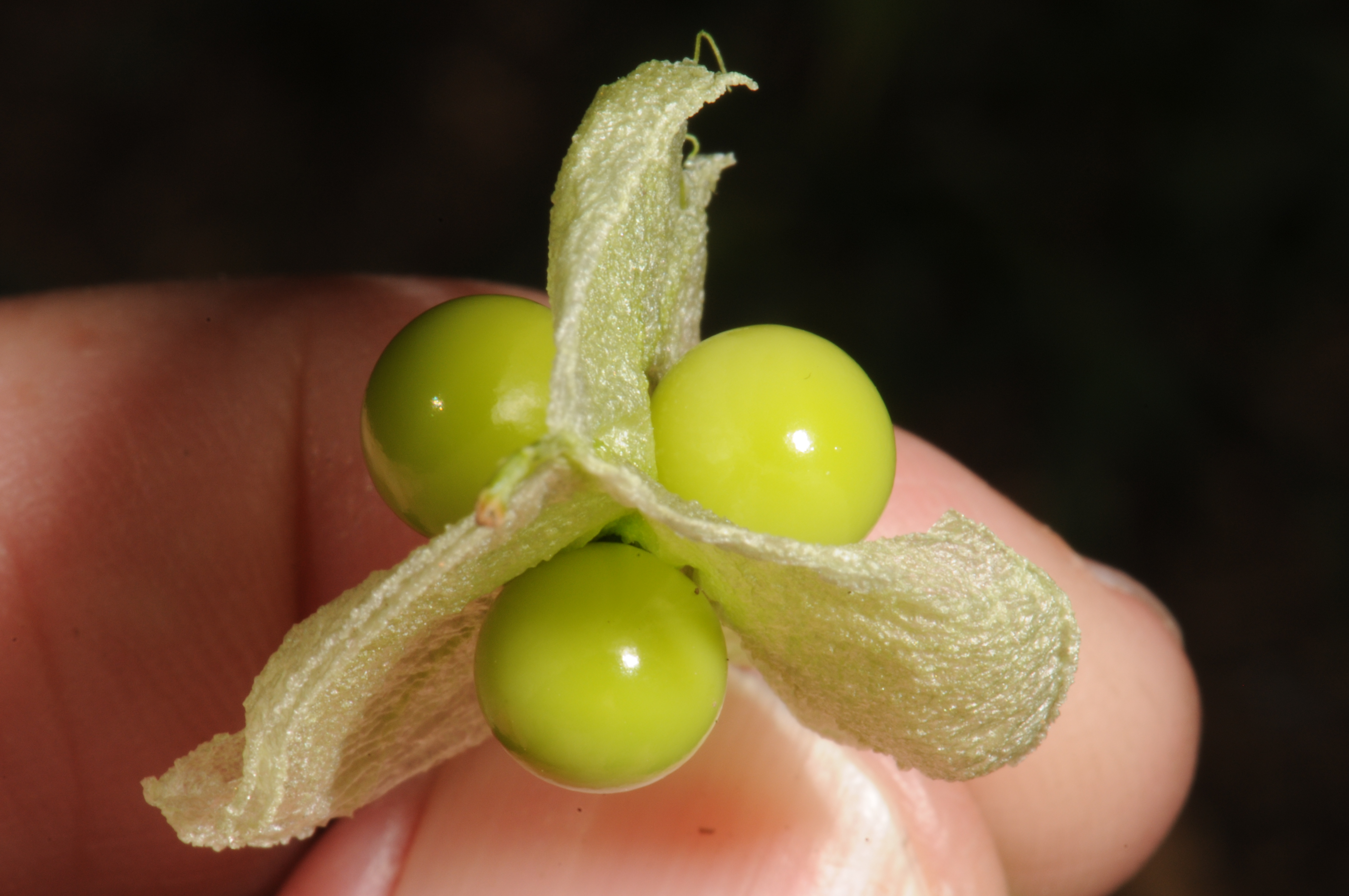
Seeds produced within each fruit of balloon vine (Photo: John Hosking).
Previous research
A biological control program for balloon vine in South Africa was launched in 2005 and extensive surveys were conducted in Argentina, the native range, until 2009. Three promising candidates for biocontrol of balloon vine were identified: the seed-feeding weevil, Cissoanthonomus tuberculipennis, the fruit-galling midge Contaria sp. and the autoecious, microcyclic, rust fungus, Puccinia arechavaletae. Host-specificity testing revealed that the fruit-galling midge and rust fungus, but not the seed-feeding weevil, could attack two congeners of balloon vine that are native to southern Africa; Cardiospermum corundum and Cardiospermum pechuelii. On the basis of these results, priority was given to the seed-feeding weevil, which was approved for release in South Africa in 2013. It established at most release sites and monitoring of field impact is on-going.
As part of the implementation of a 5-year weed biocontrol plan for the Cook Islands, supported by the New Zealand Ministry of Foreign Affairs and Trade, the balloon vine rust fungus was imported in a quarantine facility in New Zealand for additional host-specificity testing to complement tests previously undertaken in South Africa. These tests demonstrated that the fungus would not pose a threat to non-target plants in the Cook Islands and thus permission to release was granted. It was released in December 2017 and within 6 months 90% decrease in balloon vine cover at specific photo points was observed.
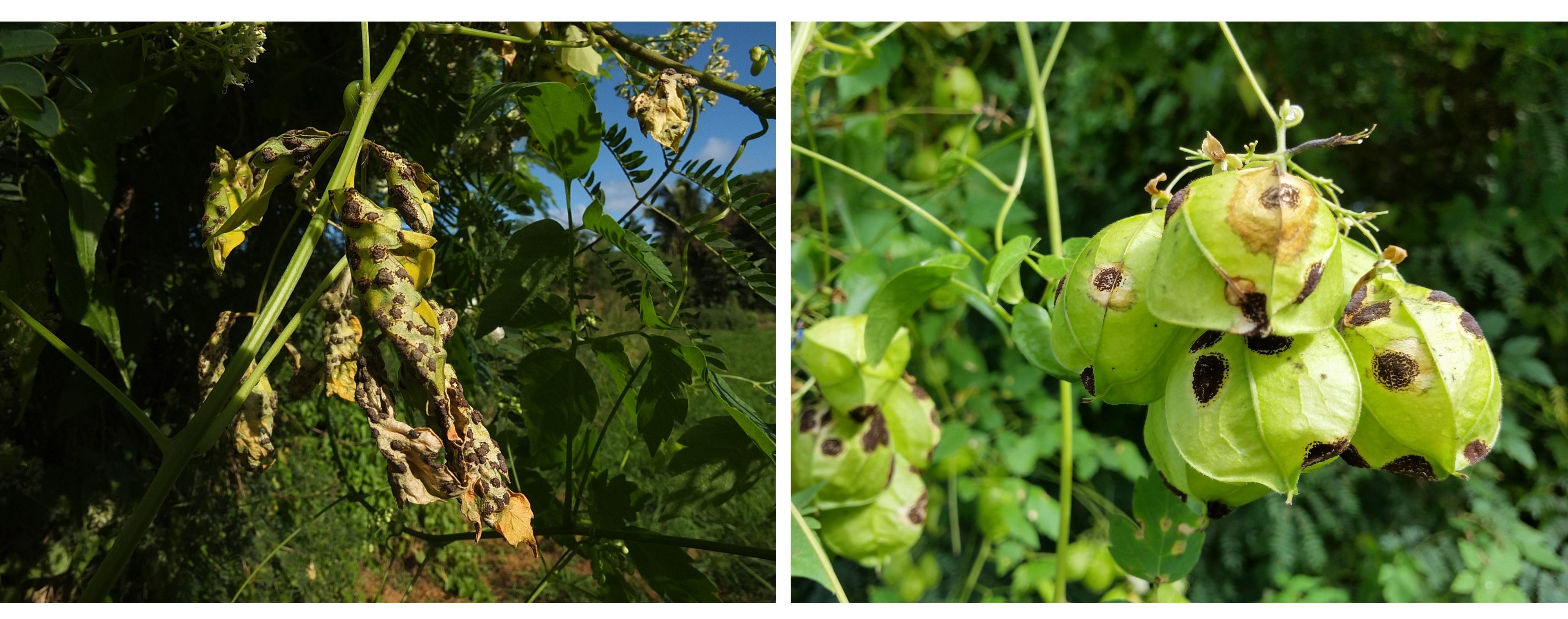
Disease symptoms caused by the rust fungus Puccinia arechavaletae on balloon vine at one of the first release sites in the Cook Islands (Photos: Quentin Paynter, Landcare Research).
Fourie A, Wood AR (2018) The rust fungus Puccinia arechavaletae, a potential biological control agent of balloon vine (Cardiospermum grandiflorum) in South Africa. I: Biology. Australasian Plant Pathology 47: 379-387.
Mc Kay, Oleiro M, Fourie A, Simelane D (2010) Natural enemies of balloon vine Cardiospermum grandiflorum (Sapindaceae) in Argentina and their potential use as biological control agents in South Africa. International Journal of Tropical Insect Science 30: 67-76.
Paynter Q, Dodd S (2012) Weed biocontrol scoping study in the Cook Islands. Prepared for Ministry of Foreign Affairs and Trade. Landcare Research Contract Report LC1140. Landcare Research, Auckland, New Zealand.
Simelane DO, Fourie A, Mawela KV (2011) Prospective agents for the biological control of Cardiospermum grandiflorum Sw. (Sapindaceae) in South Africa. African Entomology 19: 269-277.
Trust-funded subproject
The rust fungus Puccinia arechavaletae was selected as the most promising candidate agent of balloon vine to pursue for the project supported by the NSW Environmental Trust because it:
- was found in host-specificity tests performed in South Africa and New Zealand to be specific towards Cardiospermum, and there are no native Cardiospermum species in Australia (although some authors disagree),
- causes severe symptoms on foliage, including fruits,
- was recently released in the Cook Islands and very encouraging signs of establishment and impact were reported soon after.
The key activities of the sub-project were to:
- Prepare and submit to the national Environment and Invasive Committee an information dossier to support the nomination of balloon vine as a target for biocontrol in Australia.
- Undertake host-specificity testing of P. arechavaletae on closely-related plant species to balloon vine that occurs in Australia, including native species and, pending results indicate that the fungus does not pose a threat to non-target species.
- Prepare and submit to the relevant authorities an application for its release in Australia for the biocontrol of balloon vine, pending results indicate that the fungus does not pose a threat to non-target species.
Summary of achievements
October 2021
Published literature pertaining to various aspects of balloon vine including its taxonomy, morphology, habitat, distribution, possible spread in Australia and control strategies were comprehensively reviewed to produce an information document to support the nomination of the weed as a target for biocontrol in Australia. This document was submitted to the national Environment and Invasives Committee (EIC) in March 2019 and endorsed by EIC in May 2019.
A host-specificity test list for the rust fungus P. arechavaletae was developed by undertaking detailed searches of literature and existing current phylogenies of the family Sapindaceae. Test lists used in previous host-specificity testing with P. arechavaletae undertaken in South Africa and New Zealand were also considered when developing the test list for this sub-project. This was done to avoid duplication but also to include important previously tested species which are applicable to the Australian context to demonstrate consistency of results between tests performed in different countries. Our test list comprised 31 non-target taxa spanning 7 groups, 1 supertribe and 3 subfamilies across the family Sapindaceae. A total of 54 accessions across 24 taxa, including balloon vine, from the test list were sourced during the sub-project.
Host-specificity testing with the rust fungus was performed on a a total of 17 non-target species (37 different accessions). Of these only Cardiospermum halicacabum var. halicacabum, Serjania exarata, Allophylus cobbe and Dodonaea viscosa developed disease symptoms. The susceptibility of the two native species, A. cobbe and D. viscosa, to the fungus was assessed in detail by testing several additional accessions of these species, including different subspecies for D. viscosa. While one accession of each of D. viscosa and D. viscosa ssp. purpurea were found to be immune to infection by the fungus, the remaining accessions of D. viscosa, D. viscosa ssp. cuneata and D. viscosa ssp. viscosa were susceptible and developed normal telia. All seven accessions of A. cobbe tested were either susceptible or highly susceptible, i.e. developed abundant normal telia. Telia produced on these species were viable and produced spores that infected plants of these species as well as balloon vine, confirming successful completion of the fungus’ life cycle. These results were discussed with other biocontrol researchers and it was concluded that it would be highly unlikely to obtain permission to introduce this rust fungus in Australia, should an application to release be submitted to the authorities.
The Trust was informed of this conclusion and it was agreed to discontinue testing and shift remaining resources in this sub-project towards research activities related to the sea spurge biocontrol agent that was approved for release in November 2020.
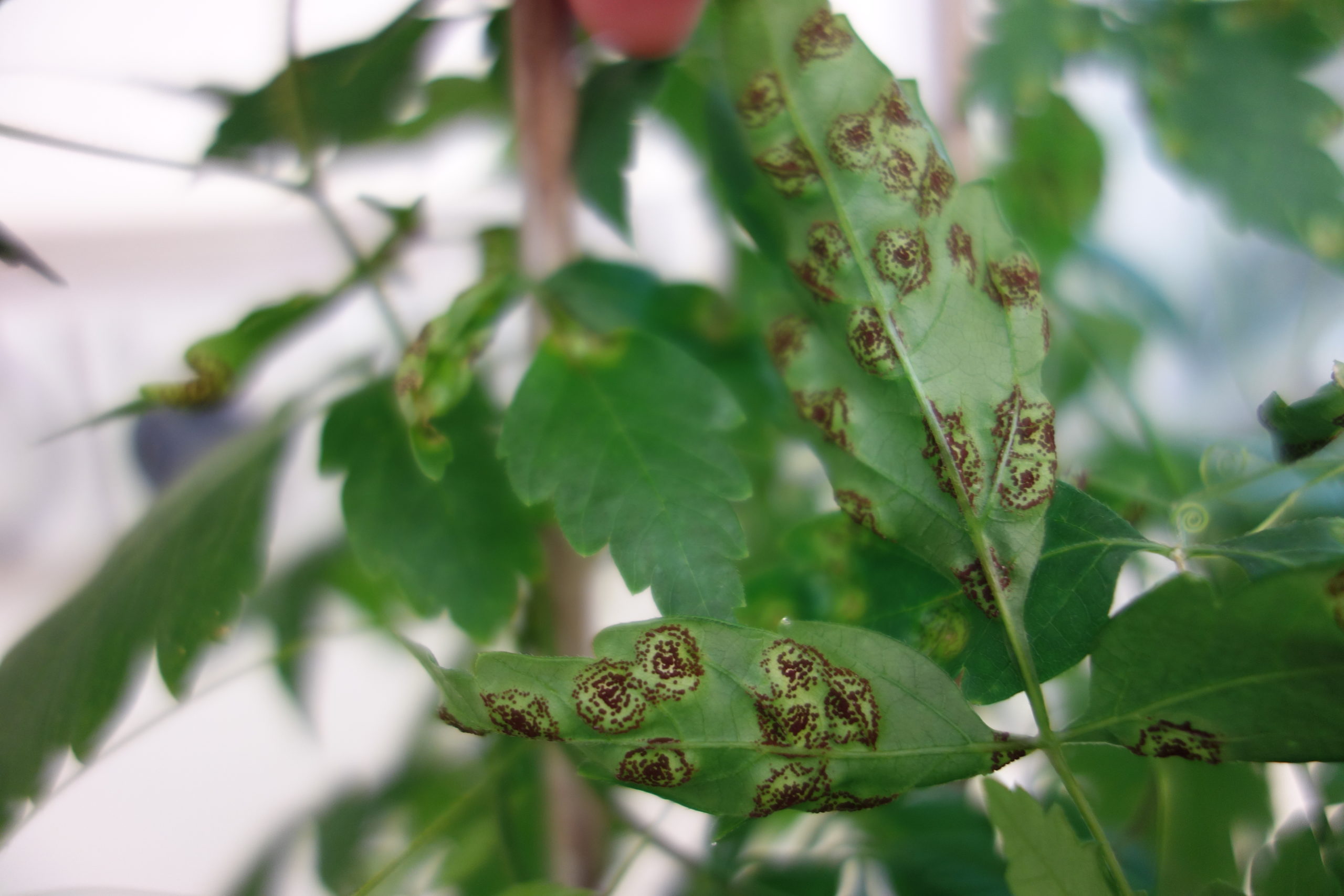
Rust symptoms on a balloon vine plant at 46 days after inoculation in the quarantine facility in Canberra.
Acknowledgement
The assistance of Isabel Zeil-Rolfe, Caroline Delaisse and John Lester of CSIRO is acknowledged.


